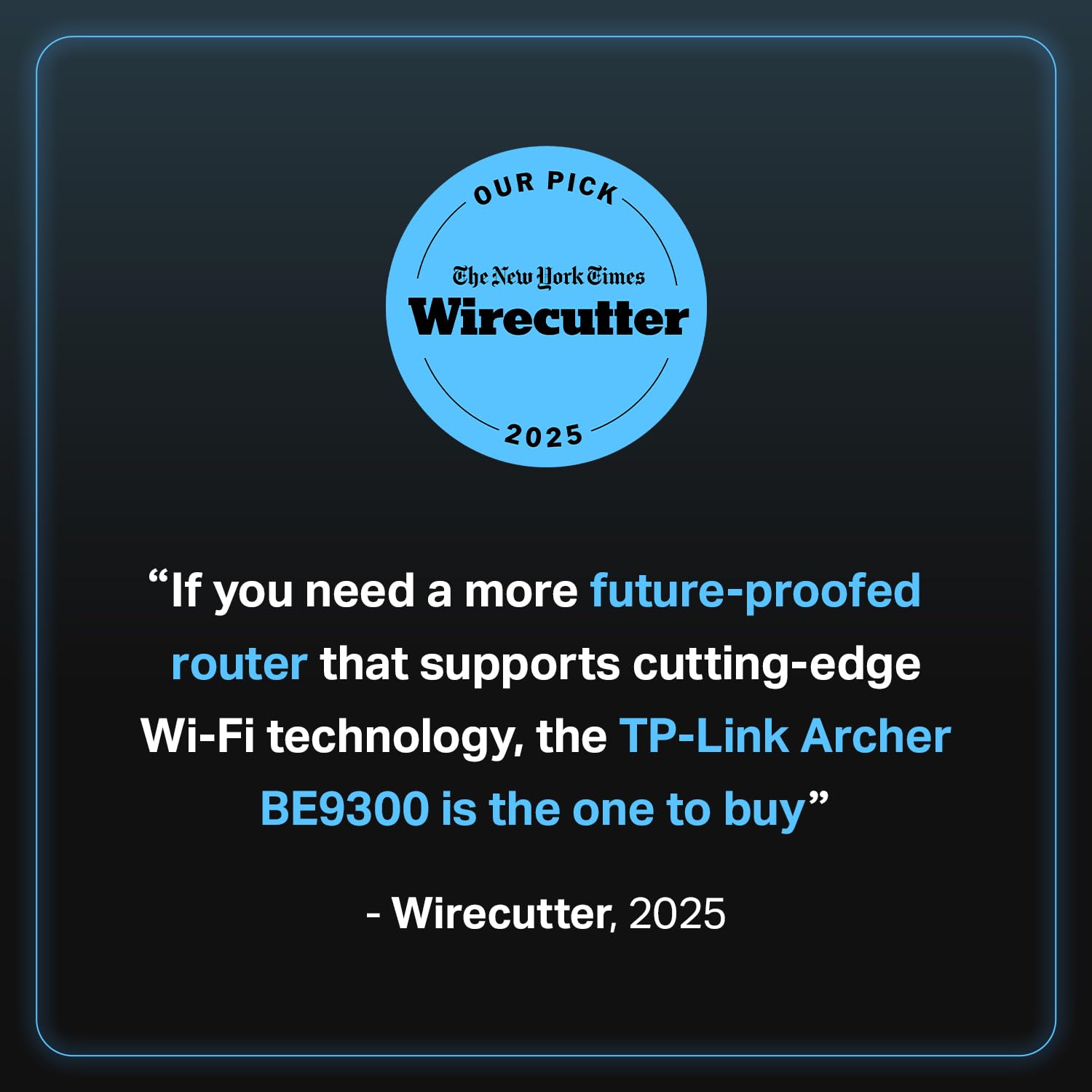Customer Services
Copyright © 2025 Desertcart Holdings Limited
Desert Online General Trading LLC
Dubai, United Arab Emirates










🚀 Elevate your home network to WiFi 7 speed and security — because buffering is so last decade!
The TP-Link Archer BE550 is a cutting-edge WiFi 7 tri-band router delivering blazing speeds up to 5760 Mbps on the 6 GHz band, supported by six internal antennas and full 2.5G WAN/LAN ports. Designed for seamless 4K/8K streaming, gaming, and future-proof networking, it offers easy mesh expansion, robust VPN and WPA3 security, and user-friendly management via the Tether app. Covering up to 2,000 sq ft, it’s the ultimate upgrade for professionals demanding fast, reliable, and secure home internet.



| Wireless Type | 802.11ad |
| Brand | TP-Link |
| Series | Archer BE550 |
| Item model number | Archer BE550 |
| Operating System | IOS, Android, Windows, Mac OS |
| Item Weight | 2.45 pounds |
| Product Dimensions | 9.12 x 2.99 x 7.99 inches |
| Item Dimensions LxWxH | 9.12 x 2.99 x 7.99 inches |
| Color | Black |
| Voltage | 12 Volts |
| Manufacturer | TP-Link |
| ASIN | B0CJSNSVMR |
| Date First Available | October 12, 2023 |
Trustpilot
2 months ago
1 month ago